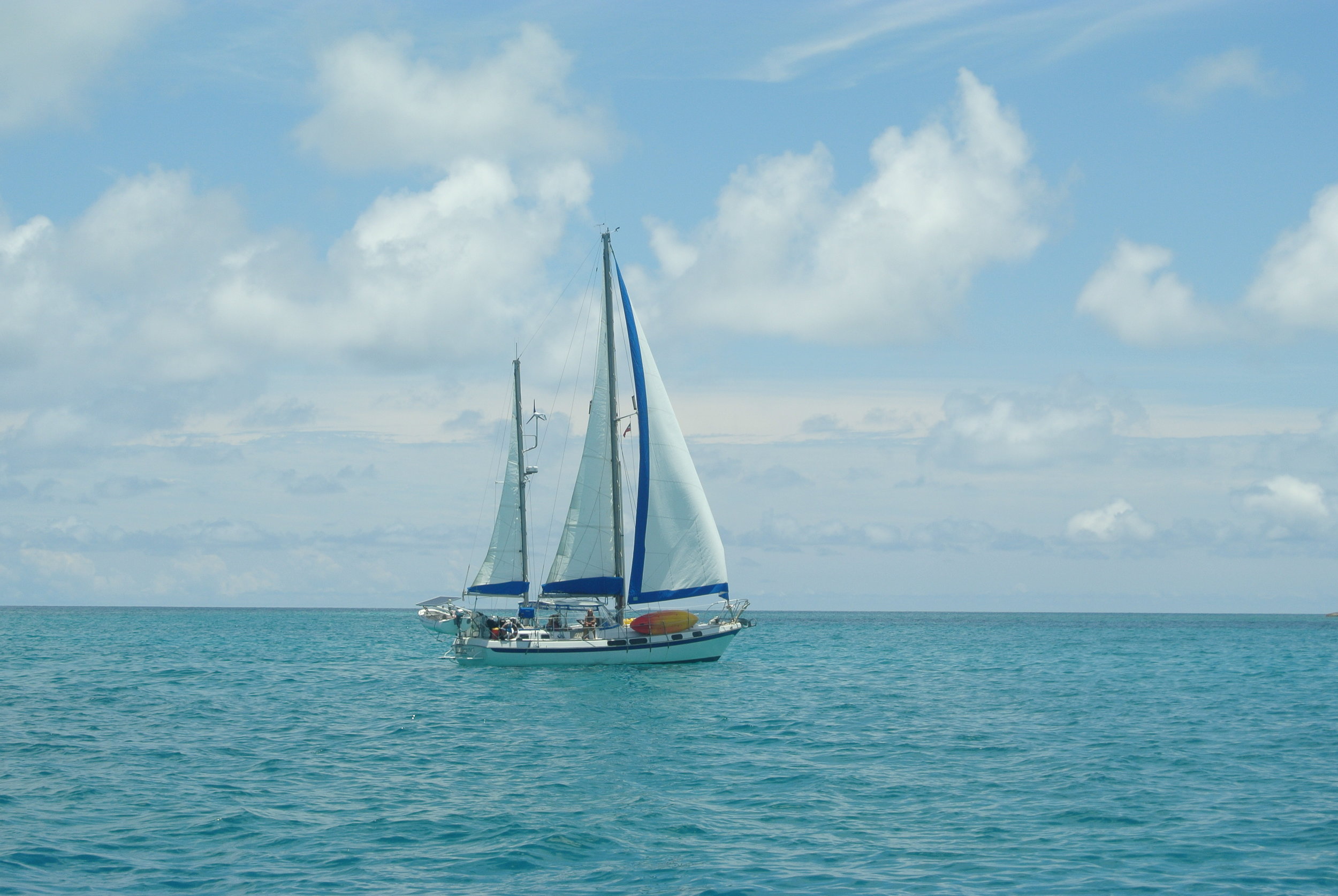For full disclosure, I am very partial towards multi-mast vessels. In my opinion, schooners are the most beautiful rig, followed by ketches and yawls.
This Morgan 41 Out Island is a wonderful example of a cruising ketch. They were designed as charter boats in the islands, and they are truely purpose built. They have a shallow draft, allowing them to creep into perfect anchorages, and plenty of beam to house their paying clientele in comfort. They are also designed to cruise in waters where they will always be on a beam reach, where a ketch will excel! The split sail plan means that each sail is smaller and more easily managed than it would on a sloop with the same sail area. This gives you great comfort and control while maintaining speed and drive through the water.
Best of all, a ketch is gorgeous to see under full sail!







